Nestled on the northeastern coast of Bali, the seaside village of Tulamben is a diver’s paradise. This part of Bali is known for its stunning marine biodiversity, historical wrecks, tiny critters, and variety of corals. Though not on the typical tourist trail, Tulamben is a must-visit destination for anyone passionate about diving or looking to try out this underwater sport.
At Let’s Dive Tulamben, we pride ourselves in being a locally-owned and operated dive shop. The waters that border Tulamben are our backyard and we’ve spent countless hours exploring what lies beneath their surface.
With so many dive spots that cater to different experience levels and interests, it’s virtually impossible to choose Tulamben’s “best” dive sites. That being said, here are five of our personal favorites that each offer something a little different.
1. Drop Off
Located along the southern edge of Tulamben Bay, The Drop Off is the deepest dive site in Tulamben. Divers enter the site from the shore and after a short swim will reach the main attraction of the site: a steep underwater cliff. This vertical wall was formed by lava flows when the Mount Agung volcano erupted. The wall starts at three meters below the surface and plunges down to more than 70 meters deep. Because of its sizable vertical range, the Drop Off caters to divers of various experience levels, from beginners to technical divers.
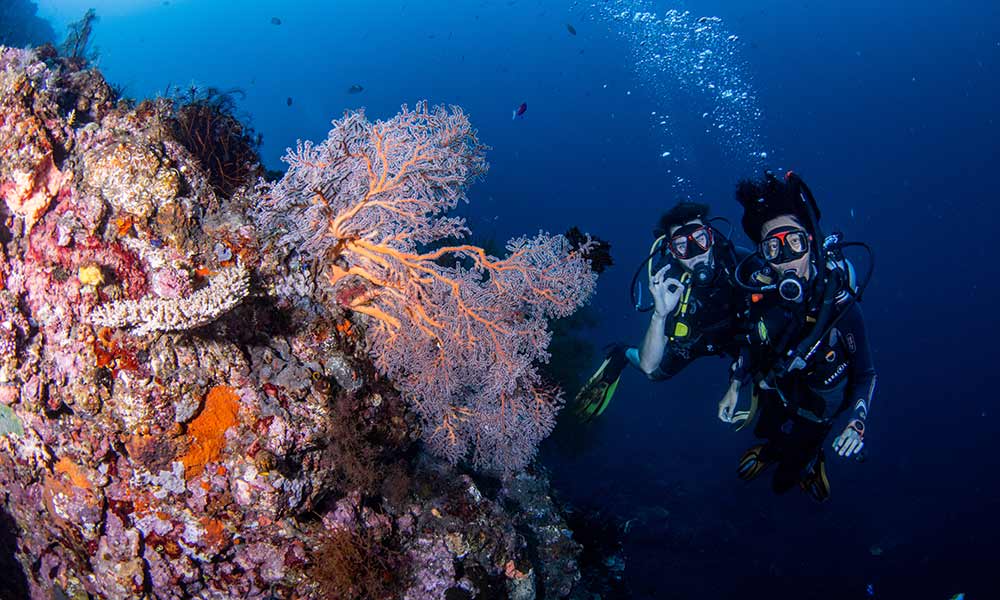
Over the years, the wall has become much more than a solidified lava flow. Corals, gorgonian sea fans, and anemones (with their clownfish tenants!) protrude from the plunging slope. Pufferfish, napoleon wrasse, and loads of other reef fish hang out along the wall. As you meander along, be attentive and you’ll be rewarded with sightings of octopuses, lionfish, scorpionfish, cuttlefish, and moray eels. These creatures possess incredible camouflage abilities and tend to hideout in crevices along the reef. Divers who know where to look can even observe an electric clam putting on a light show behind a patch of coral. Going with a knowledgeable guide makes it a lot easier to spot the elusive species that inhabit the Drop Off.
2. Emerald
While many of Tulamben’s dive spots are shore dives, there are a few sites around the corner of the bay that must be reached via a short boat ride. The boats that take divers to these sites are not your typical dive boat. Rather, they are traditional wooden boats known as jukungs, a reflection of the local fishing culture. Compared to the sites in Tulamben Bay, far fewer divers visit these jukung dive spots, the furthest of which is Emerald.
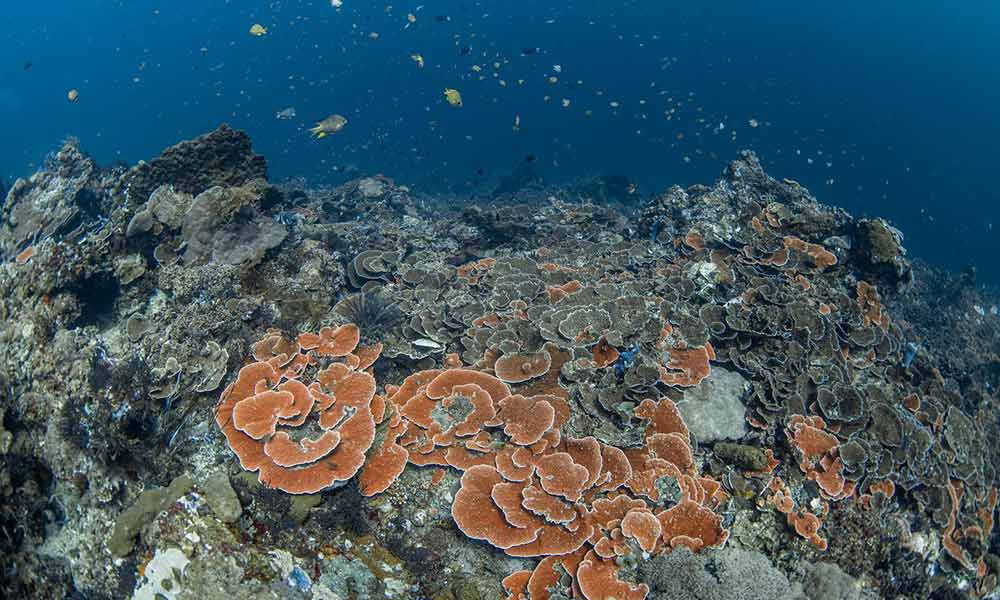
Emerald consists of a sloping reef covered in various types of hard corals, large sea fans, and humongous elephant ear sponges. The natural reef is supplemented by a few artificial structures, including a table and chairs as well as a sunken car. Divers will notice that the sand at Emerald is a lighter hue, a welcoming contrast to the dark volcanic sand found in Tulamben Bay.
Emerald’s healthy corals are a welcoming habitat that attracts a diverse array of reef fish and even some larger species. Groupers, pufferfish, angelfish, bannerfish, and schools of sardines can all be seen swimming about the reef.
3. Boga Wreck
If you’re into wreck diving, then you won’t want to miss the Boga Wreck. As demonstrated by Tulamben’s more famous Liberty Wreck (more on that below), sunken ships can make excellent artificial reefs. The Boga Wreck was intentionally sunk in 2012 for the dual purpose of creating a new marine habitat and a fascinating dive site. It is also known as the Kubu Wreck due to its location in the neighboring village of Kubu.
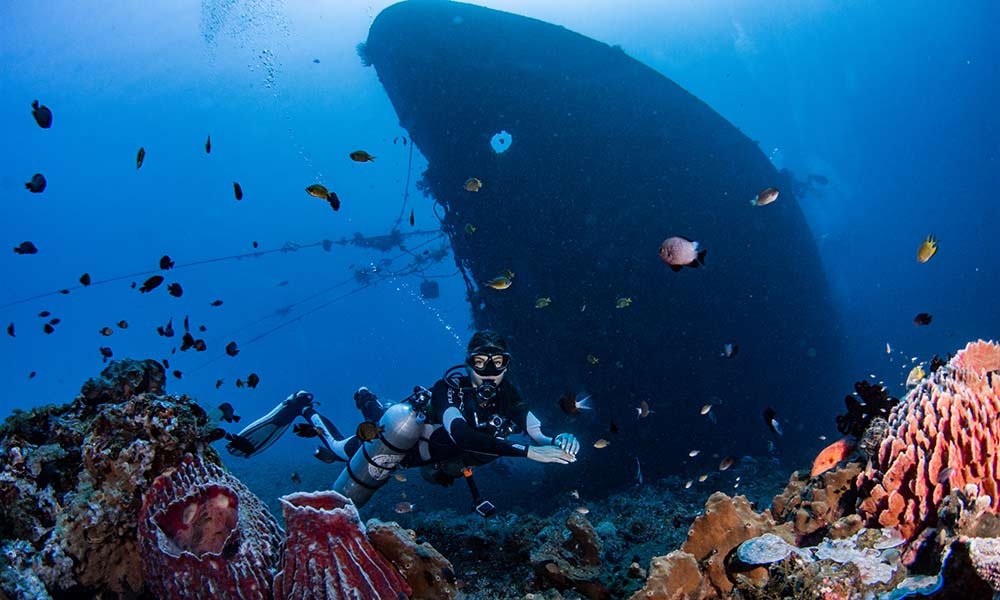
As divers descend toward the wreck, its dark, clean-cut silhouette gradually materializes from the blue. Because it has only been underwater for about a decade, the Boga Wreck is still mostly intact and a series of ropes holds the ship in an upright position. This makes it an exhilarating site for divers who enjoy penetrating wrecks. Divers can swim through both of its lower decks. As the wreck sits between 18 to 40 meters deep, it is only suitable for advanced divers. If you do your Advanced Open Water with us, you’ll likely visit the Boga Wreck for the deep diving portion of the course.
The ship is still being colonized by coral, so don’t go here expecting to see an expansive reef. However, numerous varieties of fish have made the Boga Wreck their home. Pufferfish, barracuda, damselfish, surgeonfish, and grouper are all common sightings here.
4. Batu Niti
Most people who visit Tulamben never hear of the Batu Niti dive site. And if they do visit, they would likely be underwhelmed by the lack of coral reefs and larger marine life. But for macro-loving underwater photographers, Batu Niti is a slice of heaven on earth.
Debris from the Mount Agung eruption formed the geography of this site which consists of a steep rocky slope covered in black volcanic sand. While some corals and crinoids protrude from the lackluster terrain, they are not the main attraction of the site. Rather, Batu Niti is a muck diving site where divers hunt for the tiniest of critters hiding in the black volcanic sand. Some of the weird and rare creatures that can be spotted here include frogfish, harlequin shrimp, ghost pipefish, and nudibranchs like stiliger sp and cyerce kikutarobabai.
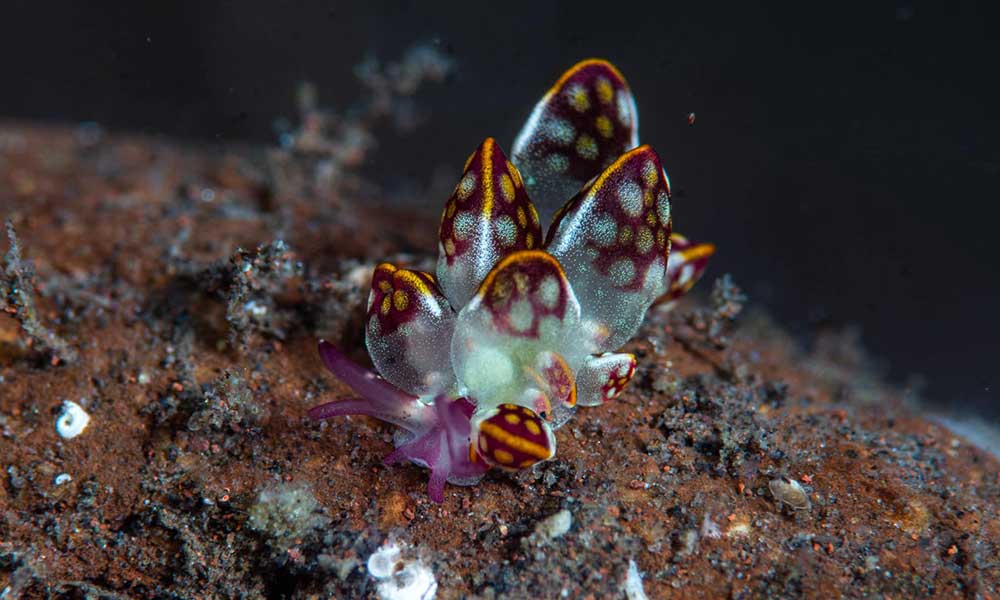
At Batu Niti, it’s highly recommended to go with a local guide who can help you find even the most miniscule critters. These critters are nearly impossible to spot if you don’t know where to look. At Let’s Dive Tulamben, we have dive guides who specialize in macro diving and know where different species tend to reside.
Batu Niti is a short five minute drive south of Tulamben in a village called Tukad Abu. It is just one of many excellent muck diving sites located in this area and around Tulamben. If you’re interested in muck diving or macro photography, be sure to let us know so we can take you to the best sites.
5. Liberty Wreck
Of course, no top five list would be complete without Tulamben’s most iconic dive site: the Liberty Shipwreck. This dive site is one of the most accessible wreck dives in the world, making it a great option for scuba divers of all levels. Beginner divers can easily explore the shallower portions of the wreck while experienced divers can venture deeper and navigate inside certain areas. The USAT Liberty ship was beached on Tulamben’s shore after being torpedoed during World War II. Volcanic eruptions in the 1960s pushed the ship into the water, where it now lies on its side. Because it rests just off shore, divers can access the wreck directly from Tulamben beach. Even snorkelers can explore the wreck since its shallowest point is only 3 meters below the surface.
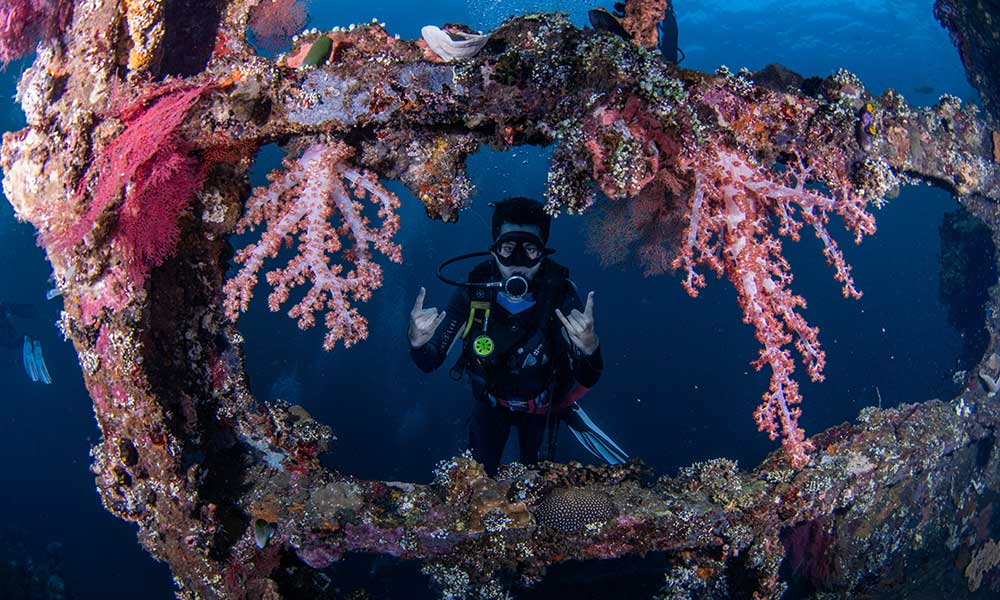
After being submerged for over half a decade, the Liberty Wreck is covered in colorful corals and sponges. The shipwreck is now an underwater habitat that is home to a wide variety of marine life. Turtles are frequent visitors and divers can spot hundreds of fish species like sweetlips, surgeonfish, and schools of damselfish. Macro divers will love the abundance of small critters that inhabit the wreck such as shrimps, ghost pipefish, and nudibranchs. A colony of garden eels poking out of the sandy bottom makes for a fun sight on the way back up from the wreck.
The Liberty Wreck is also a great place for night dives in Tulamben. At night, divers can get a better look at the reef’s vibrant colors and witness different types of marine life, such as glowing fish and nocturnal species that are more active after dark.
One thing to keep in mind is that the Liberty Wreck is the most popular dive site in Tulamben, which also means it can be the most crowded. We recommend staying the night in the Tulamben or Amed area so you can dive the wreck at less common times. View our full guide to diving the Liberty Wreck in this blog post.
Plan Your Tulamben Dive Trip
The dive sites above are just our top five picks. There are lots of other great sites in the Tulamben area that are also worth a visit depending on what you’re looking for. For instance, Coral Garden is a great site for beginner divers and snorkelers, or those looking to see artificial reef restoration in action. There are also loads of other muck diving sites that are ideal for spotting rare macro life.
At Let’s Dive Tulamben, we offer personalized adventures that allow you to choose where and when you dive. We’ll help you craft a dive plan that aligns with your experience and interests. Click here to book your dive or tap the button at the bottom right of your screen to chat with us on WhatsApp.




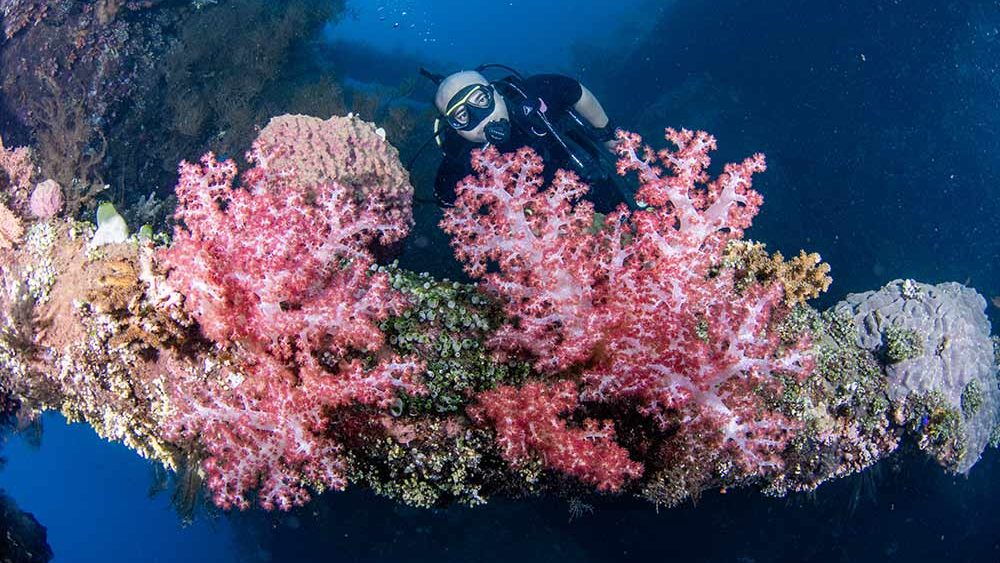

Comments are closed.